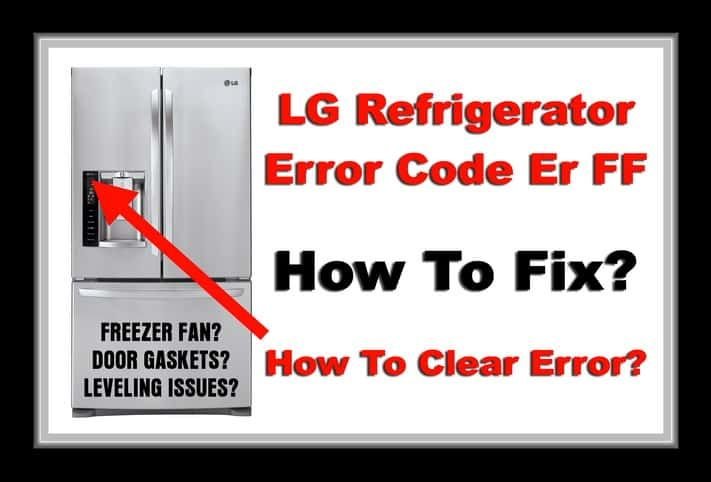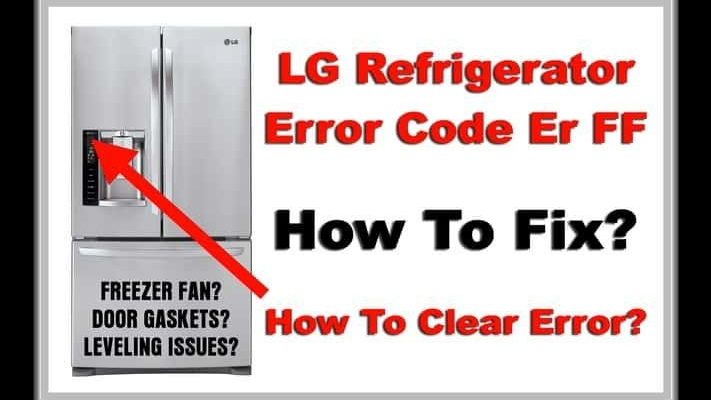
Now, you might be wondering what this “HE” error code actually means. In the simplest terms, “HE” stands for “Heater Error.” This code indicates an issue related to the refrigerator’s heater system, which is designed to keep things running smoothly inside your freezer. Think of it as a small but crucial part of how your freezer maintains the perfect temperature. When the heater isn’t working properly, frost can build up, leading to problems with cooling efficiency and potentially affecting food preservation.
Understanding this error code isn’t just about solving a mysterious riddle. It’s important because it helps you identify and address potential problems before they turn into bigger, more costly issues. Here’s the deal: catching these errors early can save you the hassle and expense of a major repair down the line. Let’s dive into the nitty-gritty details to understand the causes, effects, and solutions for this pesky error code.
Understanding the Heater Error
The “HE” error code is all about trouble with the heater system. Here’s how it works: your LG refrigerator uses a defrost heater to keep frost from accumulating in the freezer. Imagine it as a small heating element that kicks in periodically to melt any frost that might have built up on the evaporator coils. If this system isn’t functioning, frost can start piling up, creating a barrier that prevents the freezer from cooling efficiently.
You might be thinking, “Why is frost such a big deal?” Well, in a well-functioning refrigerator, air flows freely over the evaporator coils, which helps maintain a consistent and cool temperature. But when frost builds up, it acts like a blanket, insulating the coils and preventing them from doing their job. If left unchecked, this can lead to food spoilage as temperatures rise above safe levels.
So, what causes a heater error? Often, it can be due to a malfunctioning defrost heater, a faulty thermostat, or issues with the defrost timer. Think of it like this: just as a problem with a car’s heating system can make for uncomfortable rides, problems with the defrost system can make your fridge less effective at keeping food fresh. By understanding these potential issues, you can take steps to address them.
Common Causes of HE Error Code
The root of the “HE” error often lies in one of three places: the defrost heater itself, the thermostat, or the timer. Let’s break these down. First, the defrost heater. It’s the part of your fridge’s defrost system responsible for warming the evaporator coils to prevent frost. If the heater fails, no heat means no melting of frost, leading to a build-up.
Next is the thermostat, which acts like a sensor to control the defrost cycle. If the thermostat is faulty, it might not trigger the heater at the right time, or at all. Imagine trying to bake a cake without knowing the temperature or time — the result is bound to be off. Similarly, if the thermostat fails, the timing and temperature for defrosting go awry.
Lastly, there’s the defrost timer. This acts as the schedule keeper, determining when the defrost cycle should kick in. A malfunctioning timer can throw off the whole defrost process, much like a broken clock missing important hours. Each of these components plays a vital role in ensuring your freezer operates smoothly. If any part falters, an “HE” error code might be your fridge’s way of waving a red flag.
Solutions and Next Steps
Now that we’ve unraveled the mystery behind the “HE” error code, what are the steps to fix it? First, a simple reset might clear the code. Unplug your refrigerator for a few minutes and then plug it back in. This can sometimes reset the control board, especially if the error was a false alarm.
If the error persists, it might be time to check the defrost system components. While I wouldn’t recommend a full DIY repair unless you’re very handy, you can start with inspecting the defrost heater, thermostat, and timer for any visible damage or signs of wear. Sometimes, a multimeter can be used to test these components’ continuity or electrical flow, but this step is best left to someone comfortable with electrical troubleshooting.
If you’re not sure or prefer professional help, contacting a qualified appliance technician is your best bet. They’ll be able to diagnose and fix the problem without the risk of making it worse. Plus, they often have access to parts and tools that make the job quicker and more efficient.
Prevention Tips for Future Errors
Nobody wants to deal with error codes popping up all the time. So, how can you prevent this issue from occurring in the future? The key lies in regular maintenance. Think of it like caring for a car — regular check-ups keep it running smoothly. Keep your freezer vents clear to ensure proper airflow, and periodically check seals and gaskets for wear and tear.
Make it a habit to defrost your fridge if you notice frost building up. Keeping the freezer free from frost accumulation goes a long way. Also, try to avoid overstuffing your fridge or freezer. Good airflow is essential for maintaining a stable and cool environment inside. Like letting your living room breathe by not overcrowding it with furniture, your fridge needs room for air to circulate.
Lastly, consider scheduling periodic professional maintenance. A technician can spot potential issues before they become problems, ensuring your refrigerator continues to run efficiently. By staying proactive, you can keep that pesky “HE” error code at bay and enjoy a hassle-free refrigerator experience.
